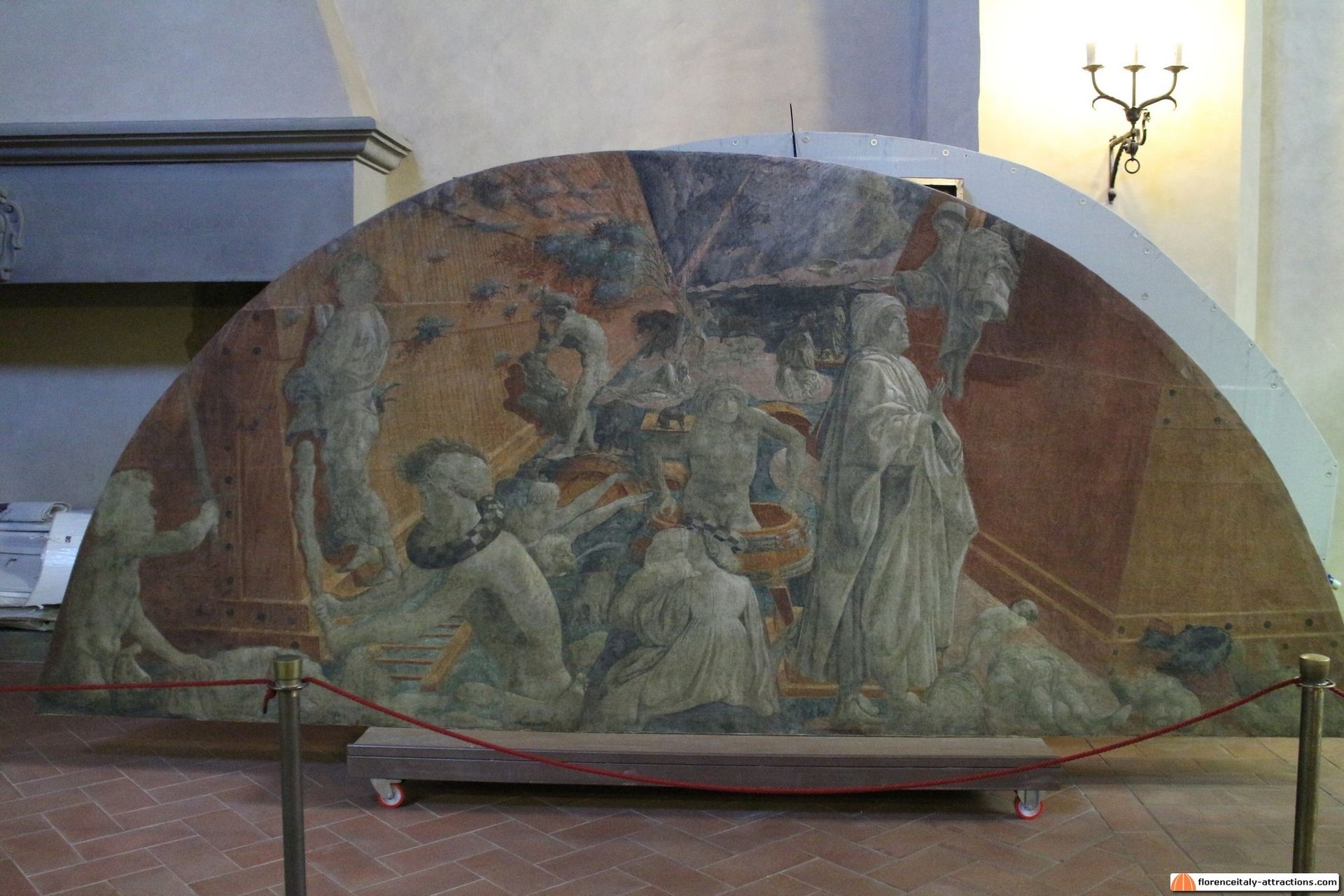Bill Viola will return to Florence in 2017, when he takes over the whole of the Palazzo Strozzi for a major retrospective. The US artist, who worked in the Italian city as a young man, has a “wish list” of Renaissance paintings, including frescoes by Uccello and Masolino, that he hopes to show along with his video installations in the exhibition, which is due to open on 10 March (until 16 July 2017). Delicate negotiations with churches and museums in the city to turn the list into loans are ongoing.
After college in the US, where he studied visual art and electronic music at Syracuse University, Viola travelled to Florence in 1974. He worked for 18 months as technical director at Art/Tapes/22, one of the first video production studios in Europe, founded by the gallerist Maria Gloria Bicocchi. The Palazzo Strozzi’s show will include an early work that the artist made in Florence—Eclipse (1974), which tracks the moon through a window. As it passes through the night sky, the moon is swallowed by the flame of a candle sitting on the window’s ledge.
Viola also regularly visited the city’s churches and museums, and the works he saw inspired the composition and aesthetic of his often spiritually inclined video installations. “Every day, he walked past Michelangelo’s David—the replica, of course—in front of the Palazzo Vecchio in the Piazza della Signoria to go to work,” says Kira Perov, the artist’s long-time collaborator and wife. “It is impossible not to be immersed in the Renaissance of Florence; there is just so much to see and do.” Other haunts included the Baptistery, with its doors by Pisano and Ghiberti, the Duomo, Santa Maria Novella, the Brancacci Chapel in Santa Maria del Carmine and, of course, the Galleria dell’ Accademia and the Uffizi.
“Today it is considered highly fashionable to juxtapose Old Masters with contemporary art, but the connections are often too blurred and the results disappointing. This is not the case with Bill’s work… [his] culture and learning are deeply influenced by the artistic tradition,” says Arturo Galansino, the director of the Palazzo Strozzi. “For this reason—even if the show is, first of all, a retrospective of Bill Viola—we are working to have a few but significant Old Masters in the exhibition.”
Among the early Old Masters to have an influence on Viola’s work is Paolo Uccello, whose murals for the Green Cloister at the Santa Maria Novella church, painted in the 1430s using earth and plant-based pigments, were recently restored by the city’s Opificio delle Pietre Dure. Uccello’s stories of Genesis, especially the flood, laid the groundwork for Viola’s The Deluge (2002). “That would definitely be on the wish list, but it is a detached fresco and is five metres wide,” Perov says. This makes the work delicate and difficult to transport. The frescoes, which were damaged in a major flood in 1966, are currently on display in the church’s refectory.

Another important artist is Masolino da Panicale, whose Cristo in Pièta (around 1424) at the Museo della collegiata di Sant’Andrea di Empoli inspired Viola’s video Emergence (2002), commissioned by the J. Paul Getty Museum in Los Angeles for its 2003 solo show Bill Viola: the Passions. “We will show this video installation at the Palazzo Strozzi, so the Pièta would also be on a wish list, but it is a detached fresco, too,” Perov says. Similarly, the impact of Pontormo’s Visitation (1528), in the church of San Michele in Carmignano, can be seen in Viola’s The Greeting (1995), although that work will not be included in the show.
The 14th-century painter Giotto also made an impression on Viola. “Bill spent time looking at his paintings at the Uffizi, as well as the Bardi Chapel in Santa Croce,” Perov says, “where he was especially taken by the frescoes of the life of Saint Francis”, particularly the panel showing the stigmatisation. “The Annunciation [around 1450] by Fra Angelico in San Marco is one of Bill’s favourite paintings,” Perov adds, “and also the small paintings inside the monk’s cells.”
It was not just the artistic sights in Florence that helped to shape Viola’s work, however. The artist also spent time going around cathedrals and churches recording ambient sound—“people milling about, speaking in muffled tones, sometimes a priest speaking from a distance,” Perov says—and has built up a large audio library over the years. “He was interested in the architecture of the cavernous spaces, and how sound bounces around and is altered by the volume of the archways and domes,” Perov says. “His videos are full of ambient sound; sound that does not represent anything in particular but at the same time is familiar.”
One audio work informed by these early explorations is Presence, originally created for the US pavilion at the Venice Biennale in 1995; it will be installed in the Strozzina undercroft for the Florence show. This six-channel sound installation, tailored to fit each space in which it is exhibited, features whispered voices telling secrets on the edge of hearing, the rhythm of steady breathing and the deep rumble of a human heartbeat.

